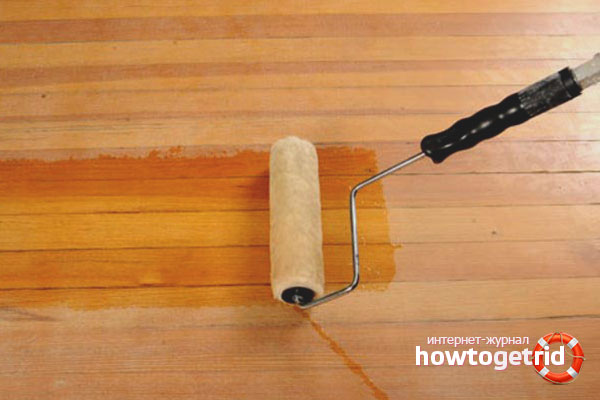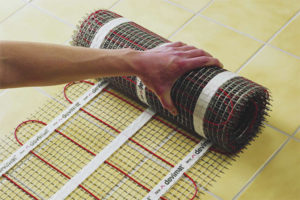The content of the article
Natural, warm parquet floors will always be in high esteem. Over the years, parquet will begin to lose its attractive appearance, but do not rush to change it to modern flooring. If the state is non-critical - there are no breaks, a lot of broken dies, deep scratches - it is easy to restore such parquet, and with minimal cost.
First you need to buy, lend or rent the tools you need during the work:
- sanding machine
- cyclic machine
- sandpaper
- wood filler
- putty knife
- oil or varnish for finishing
Deep parquet restoration
A rather time-consuming procedure, which includes the elimination of squeaks, swelling and repair of damaged dies. You need to be completely confident in your abilities, otherwise it is better to entrust this stage to professionals.
Elimination of squeaks
The cause of creaking floors is often sagging wedges or the formation of voids under the parquet. In the first case, the plinth is removed and the wedges dried from time to time are replaced with new ones.
If for several days the floors continue to creak, you need to check the plywood substrate under the parquet, which tends to wear out during the depreciation process. Locally, in the place of squeak, a hole is drilled into which a concrete solution is injected with a syringe. Two days parquet stands under the press, after which the hole is sealed with plaster.
Elimination of swelling
The cause of bloated parquet is in most cases high humidity. With a small area of damage to the floor you need to warm up with any powerful hair dryer. As soon as a characteristic parquet odor appears, a load of at least 12-15 kg / dm2 is installed at the place of swelling. The apparent reduction of bloating suggests that the problem has been found and the procedure should be repeated until completely eliminated.
Repair damaged dies
Dies should be completely replaced, having shrunk to such an extent that a gap more than 5 mm has formed between them and the neighboring ones.Such fragments are taken out, they clean out the remnants of the old glue and adjust the new plate to the required size, after which they put it on the glue into the resulting space. In this case, pay attention to the fact that the groove of the new plate tightly sat on the spike next. A new die, tightly pressed to the base, is aged for 24 hours under pressure.
Restoration of damaged dies
If the gaps between the loose dies are small, glue is pumped under them with a syringe and a press is installed for a day.
Surface Parquet Restoration
If a deep restoration took place without removing the baseboards, now they do it first. Then you can proceed to the full restoration of the parquet, carefully vacuuming the entire surface before it.
Cracking putty
Small scratches and flaws (not more than 1.6 mm) are sealed with a putty, which is selected based on the tone of the wood. The putty is applied with a spatula to all cracks, and surplus is removed. After the putty has dried, the treated surfaces are scrubbed with sandpaper to a perfectly smooth state.
Scouring or grinding
Both methods of treatment imply a complete cleansing of the floors from the old varnish.
Floor scrubbing. It is advisable to conduct zicking with a parquet thickness of at least 1.5 cm. The scraping machine removes a layer of wood up to 3 mm, but returns the original color and beauty to the floors. Treat floors in this way should be clearly along the fibers. Mechanical floor scrubbing is carried out with the help of a hopper, it is an easy, relatively clean and very high-quality way to bring floors into proper form.
Manual cycling is carried out using a special tool - manual cycle. The method is cheap, but time consuming, requiring patience and certain skills, otherwise the result may be a rough and unevenly treated surface. With this method, the parquet is moistened with water or steamed with an iron through a wet cloth.
Polishing of floors. With the help of a grinder, you can completely replace the cycle of floors, while saving a few mm of wood. The grinder carefully removes the old layer of lacquer, and the surface grinding option gives the parquet a perfect smoothness. In hard-to-reach places, a round grinding machine should be used.A clear advantage of grinding can be called the fact that grinding is carried out both along and across the fibers, in contrast to the grinding.
Final stage: varnish or oil
After polishing, the floors should be thoroughly vacuumed. Then decide whether the old color scheme will remain, or modify it with the help of wood stain, which, depending on the selected color, can enhance or change the original shade of the tree.
It is possible to cover the restored parquet with oil even if it was originally treated with varnish. Oil tends to penetrate into the deeper layers of wood, so the first layer should be applied to the surface of the oil with a high content of solvent. For the final layer, thicker oil formulations are used. After half an hour, residues of unabsorbed oil are removed with a clean cloth and you can walk on the parquet the next day.
Apply varnish is better in several thin layers. Only having a decent experience will be able to make this procedure an even layer of uniform thickness. Natural varnishes dry for several days, and polymeric - for several hours. Writing a new life to old parquet floors is not that difficult,moreover, labor costs and rental of tools more than compensate the savings, because the work of professionals is not cheap.
Parquet floor care
In order for the parquet floor to remain as new for a long time, one should not ignore the elementary rules of care: regularly perform wet cleaning with a well-wrung soft material and periodically polish it with professional means to protect parquet floors. Then the parquet will serve for many more years, giving your beloved home warmth and comfort.
Video: do it yourself parquet repair













To send